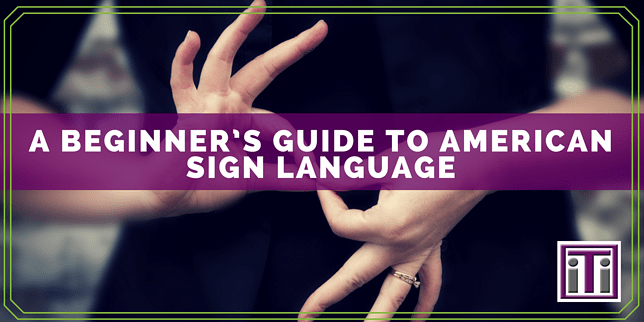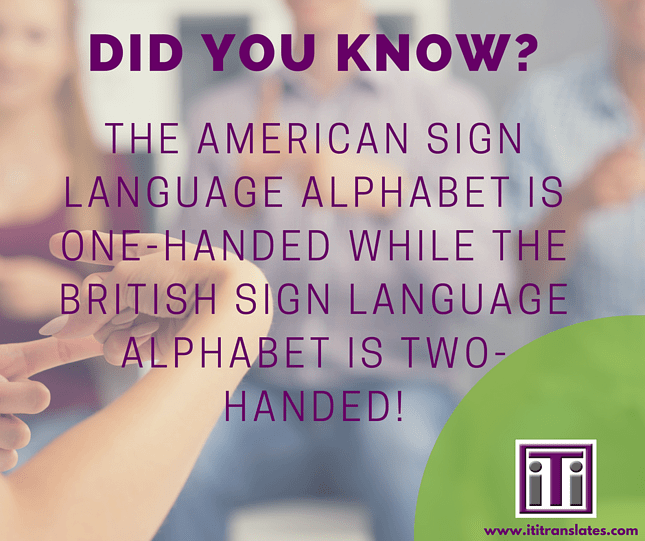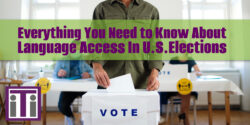
We discuss spoken languages frequently on this blog and today we are addressing a very important subject that we feel more language service companies such as ourselves should discuss more often. We at iTi will continue to cover this subject in more detail moving forward: American Sign Language (ASL) & ASL interpreters.
American Sign Language and sign languages across the globe require similar services as spoken languages but they are in a league of their own as far as communication is concerned.
First things first, American Sign Language is not the only type of sign language in the world. It is, however, one of the most popular being signed in about 40 different countries.
Just as there are thousands of spoken languages across the globe, there are hundreds of different types of signed languages spoken across borders. There is no such thing as a universal sign language.

There are many stories throughout history about the oppression of deaf people and the history of sign language. According to Start ASL, Aristotle was the first to record information on the deaf. “His theory was that people can only learn through spoken language. Deaf people were therefore seen as being unable to learn or be educated at all”.
It’s easy to see how centuries ago this mindset took hold throughout society causing fundamental rights to be taken away from deaf individuals. Aristotle’s claim was later disputed by scholars during the Renaissance by proving that deaf persons could be educated.
This mark in history is what is said to have been the creation point of sign language.
History of American Sign Language (ASL)
In the history of sign language, American Sign Language (ASL) is relatively new. The first record of ASL begins in 1814 when deaf education was introduced to the US.
At that time in American history, there were only a few thousand deaf Americans. With no standard sign language, they began to create various signing systems in their communities.
These systems are known as Old American Sign Language and the ASL we know today is related to this language.
Dr. Thomas Hopkins Gallaudet, a resident of Hartford, Connecticut travelled to Europe to educate himself on Sign Language after finding an interest in his neighbor’s daughter who was deaf yet very smart.
There, Gallaudet met Laurent Clerc who was an accomplished deaf educator in French Sign Language. They traveled back to Hartford together and started the now famous American School for the Deaf in 1817.
This was a huge milestone in American Deaf history as it was the first public free deaf school in the US.
The school grew quickly and by 1863, twenty-two deaf schools in the US had been established. Most of them were founded by students of the American School of the Deaf and they continued to use Clerc’s education methods.
It is believed that the modern ASL evolved from the original teachings of Gallaudet and Clerc. It’s difficult to determine whether ASL or FSL has more of an influence on modern ASL but it is known that this blend of teachings and languages formed what we now know as American Sign Language.

How does ASL compare with spoken language?
Although ASL is used in America, it is a separate language from English. Sign language is based on the idea of conveying sight with hand shape, position, movement, body movements, gestures, facial expressions and other visual cues. (Medicinenet.com)
Spoken language conveys meaning through sounds created by words and tones of voice as means of communication. When interpreting between English and ASL, interpreters are putting the English language into native ASL for the recipient.
The American With Disabilities Act
While the deaf community continued to grow and formalize American Sign Language, this did not mean that they were treated with respect by different communities and/or protected by the government.
It took years of organized protests for the government to recognize the deaf and hard of hearing community as a minority.
1973 marked a historic shift in disability public policy with the passage of Section 504 of the 1973 Rehabilitation Act which banned discrimination on the basis of disability by recipients of federal funds. This was modelled after previous laws which banned discrimination based on race, country of origin and sex (as previously discussed here)
This policy shift was the first time that people with disabilities were officially recognized as a minority group. It acknowledged that although there is a wide variety of disabilities, overall the group faced similar discrimination in employment, education and access to society. This regulation established through Section 504 eventually set the foundation for the American with Disabilities Act (ADA).
However, these improvements were not made immediately as President Reagan had just taken office and established a Task Force to “de-regulate” regulations which were burdensome on businesses. This included Section 504.
The community once again fought back to preserve the regulations they had established. Through many years of the community remaining active in Washington to ensure disabilities rights were respected, the ADA eventually came to fruition. It went through numerous drafts, revision, negotiations and amendments.
Finally, on July 26, 1990 Congress passed the ADA, a huge win for the disability community. It is known as the nation’s first comprehensive civil rights law addressing the needs of people with disabilities.
It maintains that people with disabilities have the same opportunities as everyone else to participate in the mainstream of American life. For the first time in the history of our country, businesses must stop to think about access and inclusion of people with disabilities.
ASL Interpreting
We hope you now understand the stark contrast between American Sign Language and spoken languages that are worked with in the language industry.
How does this apply to interpreter services? We tell all below.
- Sign language interpretation is mostly simultaneous while language interpretation is often consecutive at times, meaning that there are pauses in the conversation for the interpreter to interpret what is being said. When someone is speaking English, an ASL interpreter is able to sign at the same rate as the speaker (although they do interpret consecutively at times, simultaneous is the norm).
- Another major difference is the requirements for becoming an ASL interpreter versus a spoken language interpreter. ASL interpreters must go through extensive schooling, training, and testing to become certified. All ASL interpreters must be certified. Some certification boards include Registry of Interpreters for the Deaf, Inc. (RID), National Association of the Deaf (NAD), or EIPA to interpret in school settings.
- While the ASL interpreting community has large nationwide organizations such as RID and the National Association for the Deaf, there are no such governing bodies in the spoken language world.
Tips for scheduling an ASL interpreter
- ASL interpreters are in very high demand! There are many full time ASL interpreter jobs available across various industries so freelancers can be limited (depending on timing, your area, etc.) Be sure to schedule your interpreter as far in advance as possible.
- If you work with ASL interpreters often, consider looking to video remote interpreting. VRI is a great tool to access ASL interpreters 24/7 without having to schedule ahead of time.
Click here for more information on how to work with ASL interpreters
We hope that this article helped to shine a light on the ASL community here in the United States. It has a long history of oppression followed by a continuous fight for equal rights. Legislation is in place and it’s up to individuals, businesses, and organizations to support this community in their daily lives. Everyone deserves a support system to be allowed to thrive in their own community. We’re here to help facilitate that.






Comments are closed here.